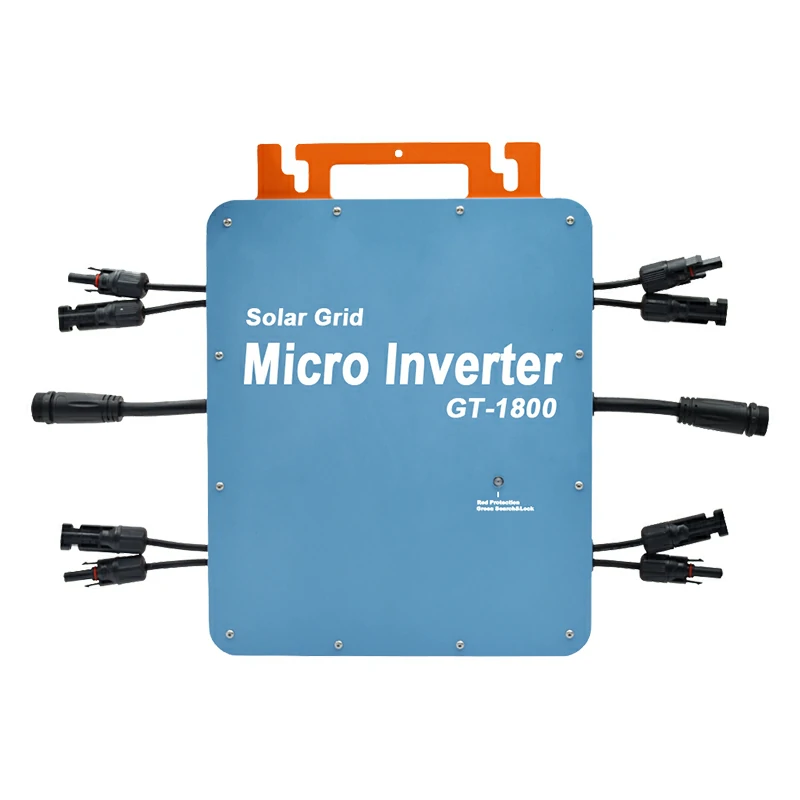Introduction
Micro inverters have revolutionized the solar energy landscape by providing a more efficient and flexible solution for converting solar power into usable electricity. Unlike traditional grid connected inverters, which convert the output of multiple solar panels as a single unit, micro inverters operate on a module-level basis. This allows each solar panel to perform independently, optimizing energy production and enhancing system reliability. However, with these advantages come important safety considerations that must be addressed during installation. This article aims to inform potential buyers about the key safety aspects to consider when installing micro inverters.

Understanding Micro Inverters
Micro inverters are small devices that attach to individual solar panels, converting direct current (DC) generated by the panels into alternating current (AC) suitable for use in homes and businesses. One of the primary benefits of using micro inverters is their ability to maximize energy harvest by allowing each panel to operate at its optimal performance level, regardless of shading or other issues affecting neighboring panels. This is a significant advantage over traditional grid tie micro inverters, which can reduce overall system efficiency if any single panel underperforms.
Safety Standards and Regulations
When installing micro inverters, it is crucial to adhere to relevant safety standards and regulations. Compliance with local electrical codes, such as the National Electrical Code (NEC) in the United States and international standards like IEC, ensures that installations are safe and reliable. These regulations often dictate specific installation practices, equipment ratings, and safety measures that must be followed.
Additionally, ensuring that your micro inverter has proper certifications—such as UL certification—can provide peace of mind regarding its safety and reliability. These certifications indicate that the product has undergone rigorous testing for performance and safety.
Electrical Safety Considerations
Voltage Levels
One of the primary safety advantages of micro inverters is their low voltage operation, typically below 60V DC. This significantly reduces the risk of electric shock during installation and maintenance compared to higher voltage systems. However, proper precautions must still be taken to ensure safety.
Proper Wiring
Correct wiring is essential for preventing short circuits and potential fire hazards. It is vital to use appropriately rated cables and connectors designed for solar applications. Additionally, ensuring proper grounding is critical to protect both the system and its users from electrical faults.
Installation Environment
Site Assessment
Before installation, conducting a thorough site assessment is necessary to identify any potential hazards. Factors such as moisture levels, exposure to extreme temperatures, and proximity to flammable materials should be considered. A well-chosen location can help mitigate risks associated with environmental conditions.
Ventilation
Micro inverters generate some heat during operation; thus, ensuring adequate airflow around these devices is essential to prevent overheating. Proper ventilation can prolong the life of the equipment and maintain optimal performance.
Accessibility
Planning for safe access during installation and maintenance is another crucial consideration. Installers should ensure that all components are easily reachable without compromising safety.
Handling and Installation Practices
Personal Protective Equipment (PPE)
Using personal protective equipment (PPE) such as gloves and goggles during installation can significantly reduce the risk of injury. Installers should always prioritize their safety while working with electrical components.
Training and Qualifications
It is vital that installers are trained and certified professionals who understand the specific requirements for handling micro inverters safely. Proper training ensures that they are aware of potential hazards and know how to mitigate them effectively.
Manufacturer Guidelines
Following manufacturer guidelines for installation is critical for ensuring safety and optimal performance. Each micro inverter may have specific requirements regarding mounting, wiring, and connections that must be adhered to for safe operation.
Fire Safety Measures
Arc Fault Prevention
One of the significant advantages of using micro inverters over traditional grid connected inverters is their ability to reduce the risk of electrical arcing. Micro inverters are designed with built-in arc fault detection capabilities that help prevent dangerous situations before they escalate.
Emergency Shut-Offs
In case of an emergency, having accessible disconnect switches allows for quick power cut-off from the system. This feature is crucial for ensuring safety during maintenance or unforeseen events.
Fire Department Considerations
Micro inverter technology can also aid firefighters during emergencies by providing clear information about system status through monitoring systems. This transparency can enhance safety protocols during fire response situations.
Maintenance and Monitoring
Regular inspections and maintenance play a vital role in ensuring ongoing safety when using micro inverters. Implementing a routine check-up schedule can help identify potential issues before they become serious problems.
Using monitoring systems allows homeowners to detect faults early on, enabling timely intervention. Monitoring can also provide insights into system performance, helping users optimize energy production while maintaining safety standards.
Conclusion
In conclusion, when considering the installation of micro inverters, it is essential to prioritize safety through adherence to regulations, proper installation practices, and ongoing maintenance. By understanding these key safety considerations, potential buyers can make informed decisions that enhance both the efficiency and reliability of their solar energy systems. If you have any further questions or need assistance with your micro inverter installation, feel free to reach out!




